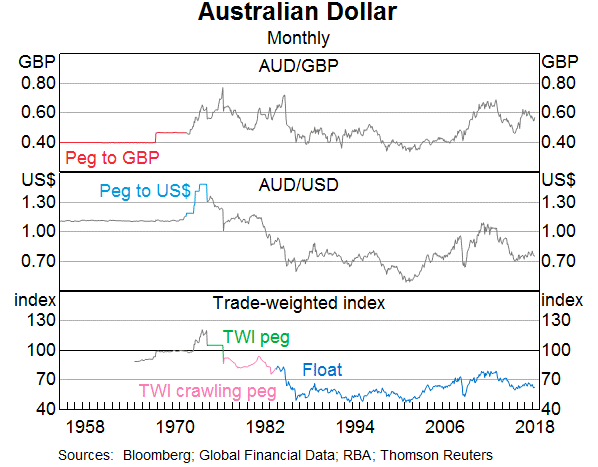A 90-day Bank Accepted Bill (BAB) has a face value of $1,000,000. The simple interest rate is 10% pa and there are 365 days in the year. What is its price now?
The following is the Dividend Discount Model used to price stocks:
### p_0=\frac{d_1}{r-g} ###
Which of the following statements about the Dividend Discount Model is NOT correct?
Question 246 foreign exchange rate, forward foreign exchange rate, cross currency interest rate parity
Suppose the Australian cash rate is expected to be 8.15% pa and the US federal funds rate is expected to be 3.00% pa over the next 2 years, both given as nominal effective annual rates. The current exchange rate is at parity, so 1 USD = 1 AUD.
What is the implied 2 year forward foreign exchange rate?
Which of the following investable assets is the LEAST suitable for valuation using PE multiples techniques?
Question 738 financial statement, balance sheet, income statement
Where can a private firm's market value of equity be found? It can be sourced from the company's:
Question 811 log-normal distribution, mean and median returns, return distribution, arithmetic and geometric averages
Which of the following statements about probability distributions is NOT correct?
Which form of production is included in the Gross Domestic Product (GDP) reported by the government statistics agency?
A one year European-style call option has a strike price of $4.
The option's underlying stock currently trades at $5, pays no dividends and its standard deviation of continuously compounded returns is 47% pa.
The risk-free interest rate is 10% pa continuously compounded.
Use the Black-Scholes-Merton formula to calculate the option price. The call option price now is:
A stock's returns are normally distributed with a mean of 10% pa and a standard deviation of 20 percentage points pa. What is the 90% confidence interval of returns over the next year? Note that the Z-statistic corresponding to a one-tail:
- 90% normal probability density function is 1.282.
- 95% normal probability density function is 1.645.
- 97.5% normal probability density function is 1.960.
The 90% confidence interval of annual returns is between:
Examine the below graph.

Which of the below statements is NOT correct?